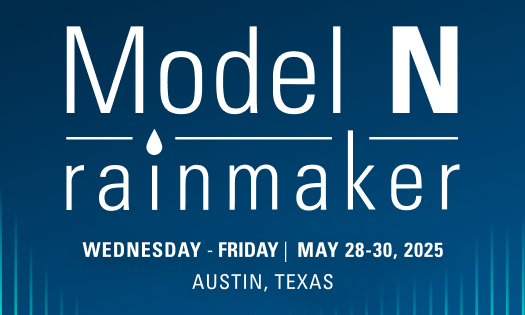According to Deloitte, the average cost of getting a pharmaceutical product successfully to market is now $2 billion. Yet, more than a third (36%) of all new drug introductions in the United States do not perform as expected. The ever-changing rules and regulations don’t help. As pharmaceutical manufacturers make their pricing moves in 2023, they need to be aware of two new areas of regulation that will affect their ability to comply with Medicaid Best Price rules: value-based purchasing agreements and inclusion of U.S. territories in the Medicaid Drug Rebate Program (MDRP).
The value-based purchasing arrangement rules went into effect on July 1, 2022. In addition, the changes to the definitions of “states” to include Guam, American Samoa, the U.S. Virgin Islands, the Northern Mariana Islands, and Puerto Rico went live on January 1, 2023.
This blog will cover the Medicare Best Price policy and how these new regulations impact them. Of particular urgency: pharmaceutical companies’ global pricing teams must partner closely with corporate strategic and commercial teams to ensure they all collaborate and understand the overall effect of decisions they are making either in value-based arrangements or discounting that they are offering to any of the U.S. territories to ensure Medicaid rebates don’t erode their margins disastrously.
Medicaid Best Price: A primer
The MDRP publishes Medicaid Best Price rules. With a few exceptions, they require manufacturers to offer the state Medicaid programs the best price they offer to any purchasers. Under the MDRP, manufacturers must agree to a National Drug Rebate Agreement (NDRA) with the Secretary of the Department of Health and Human Services if they want their products to be available for state Medicaid coverage. In addition to signing an NDRA, drug manufacturers must enter into an agreement with two other federal programs, such as 340B and Federal Supply Schedule. Under these agreements, drug companies must report pricing information to the Centers for Medicare & Medicaid Services (CMS) and – most significantly – pay rebates on their products to states under the state Medicaid plan.
A key piece of information reported under the MDRP is the manufacturer’s “best price,” which is defined by CMS and can be found in CMS published material (section §447.505 -Page 636) as:
“[T]he lowest price available from the manufacturer during the rebate period to any wholesaler, retailer, provider, health maintenance organization, nonprofit entity, or governmental entity in the United States in any pricing structure (including capitated payments) in the same quarter for which the AMP [average manufacturing price] is computed.”
This best price is used to calculate the rebate per unit (RPU), also known as the unit rebate amount (URA) in the Medicaid drug rebate program. The URA for a brand drug (single source and innovative formula) is 23.1% of the Average Manufacturer Price (AMP) per unit, or the difference between the AMP and the best price per unit, whichever is greater and adjusted by the Consumer Price Index-Urban (CPI-U) based on market data and current quarter AMP.
Territory expansion impact on Medicaid Best Price
As part of AMP Final Rule, CMS proposed the inclusion of five U.S territories – (American Samoa, Guam, Northern Mariana Island, Puerto Rico, and U.S. Virgin Islands) as the definition of “states,” including the original 50 states to expand MDRP to the territories. As of January 1, 2023, this rule has been effective. As part of this rule, manufacturers are expected to include sales to territories in CMS government prices calculation.
If a drug manufacturer offers a lower price to one of these territories, then that single transaction can set the Best Price for the drug in its entirety. This may result in a higher unit rebate amount, thereby causing a significant increase in Medicaid liabilities across all state Medicaid utilizations, and also may result in lower 340B pricing impacting the bottom line.
So, such companies must think carefully about their contracting strategies, their discounting strategies, and what discounts they can offer to any commercial entities in any of the now-55 U.S. states and territories covered by the regulations.
Value-based pricing: how it works
A manufacturer can make two pricing arrangements with a payer, such as a commercial healthcare provider. One is a general discount, something offered as part of the standard process/the regular arrangement. The other is value-based pricing, where a drug manufacturer can choose outcome-based pricing and evidence-based measures to determine the pricing. The evidence-based approach links drug prices to existing evidence of effectiveness. In contrast, outcome-based measures link payment for the drug to actual performance – how well the drug achieved the objective for a specific patient or patient population.
Why choose one sort of value-based pricing strategy over another? When a new drug targets an illness or disease, outcome-based pricing can make it an attractive proposition despite the risk of it being relatively untried. Outcomes-based pricing aligns the price of a drug to an outcome delivered. This outcome can be clinical, such as a reduced blood pressure reading; economic, such as lower cost; or behavioral, such as an easier protocol for patients to follow.
Evidence-based measures use existing real-world data and real-world evidence to establish pricing. This data can range from metrics for developing new drugs to the methods used to manufacture and distribute them. Evidence-based measures help payees to know they are purchasing products of sufficiently high quality by making purchasing decisions based on evidence from scientific research and clinical trials.
But value-based pricing arrangements can affect best price calculation if manufacturers combine this with the traditional non-value-based arrangement. By definition, if a drug doesn’t meet the evidence criteria or fails to achieve the outcome, the manufacturer has to offer it for free or provide a heavy discount because they have to pay more rebates. By combining both methods, the best price can be very low or even zero($0). Of course, manufacturers can take advantage of bundle sales arrangements to minimize the impact. Therefore, they can look to their contracting strategies, make the appropriate decisions, and take advantage of CMS’s new proposal for reporting multiple best prices.
As part of AMP Final Rule on VBP, CMS allowed reporting multiple best prices. One is the traditional best price, and the other is the best price for each value-based arrangement. This gives manufacturers some breathing room because if the treatment does not perform as expected, they are liable to pay only that portion of the utilization.
For drug manufacturers with any sort of value-based arrangement, making sure that they are prepared and acting in unison across pricing strategies is essential to ensure that there is no downstream impact. Otherwise, they could end up with significant Medicaid liabilities or a lower 340B price.
Value-based pricing challenges facing manufacturers
Value-based pricing for pharmaceuticals involves setting prices for drugs based on the value they provide to patients and the healthcare system rather than the cost of production. Some of the biggest challenges for pharmaceutical companies with value-based pricing include the following:
-
- Determining the value of a drug: Companies need help to accurately assess the value of their drugs related to clinical effectiveness, side effects, and cost-effectiveness.
- Negotiating with payers: Pharmaceutical companies may have difficulty reaching agreements with payers on the value of their drugs and the prices they should be charged.
- Managing shareholders’ expectations: Value-based pricing may result in lower profits for pharmaceutical companies, which can be a concern for shareholders.
- Balancing affordability and innovation: Pharmaceutical companies must balance pricing their drugs affordably and maintaining the resources to invest in research and development of new medicines.
How Model N can help
The manufacturer’s revenue management and market access team is likely operating under tremendous pressure to balance the market dynamics, industry needs, and ever-evolving government compliance requirements. The goal of this team is to create optimal strategies that require close collaboration across the team to evaluate the holistic impact on the pricing decision.
Model N’s Revenue Management solution is designed to help manufacturers maximize revenue and meet compliance requirements by defining appropriate contracting strategies, navigating through Government Pricing needs, and assessing Medicaid and 340B liabilities while driving business with commercial and government entities. We’re here to support you as you deliver life-changing medicines to those in need.














